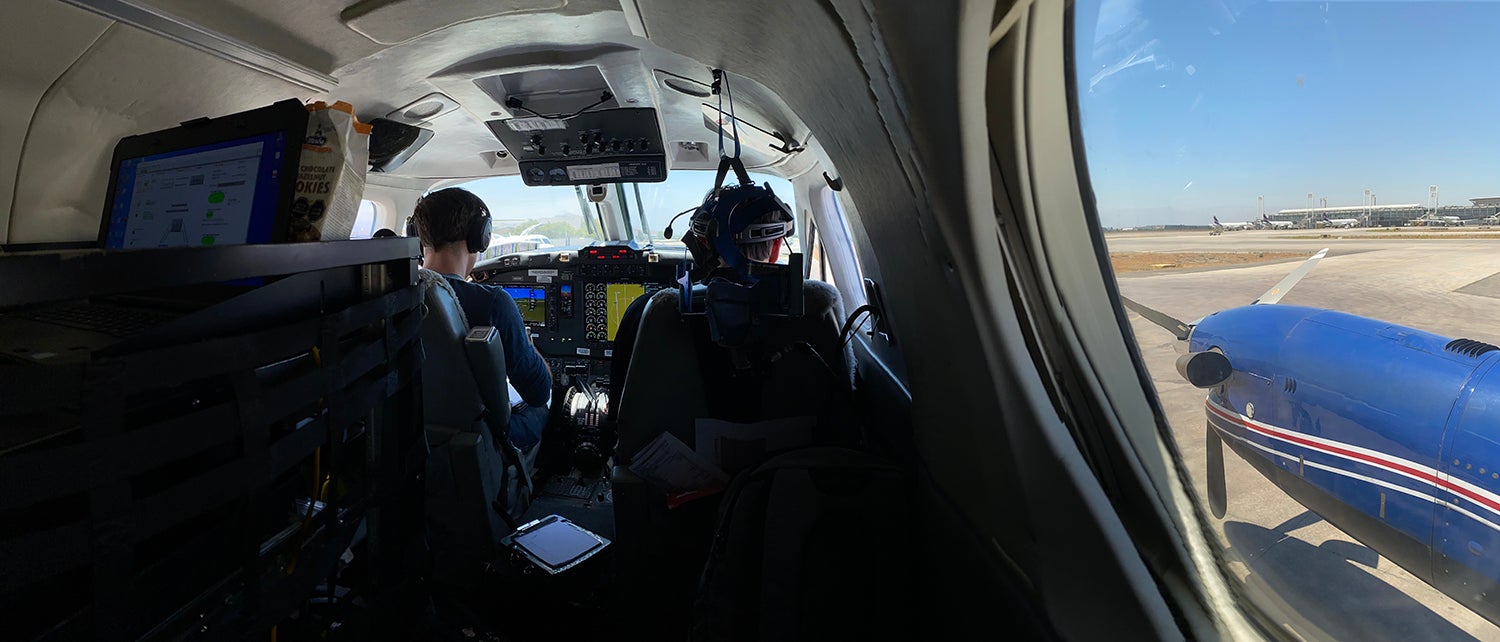
Stanford-led research shows methane emissions from a large share of U.S. oil and gas facilities are three times higher on average than the level predicted by official government estimates.
Oil and gas operations across the United States are emitting more than 6 million tons per year of methane, the main component of natural gas and the most abundant greenhouse gas after carbon dioxide, according to Stanford-led research published March 13 in Nature.
These emissions, which result from both intentional vents and unintentional leaks, amount to $1 billion in lost commercial value for energy producers. The annual cost rises to $10 billion when researchers account for harm to the economy and human well-being caused by adding this amount of heat-trapping methane to Earth’s atmosphere.
The new emission and cost estimates are roughly three times the level predicted by the U.S. government. The results are based on approximately 1 million aerial measurements of U.S. wells, pipelines, storage, and transmission facilities in six of the nation’s most productive regions, including the Permian and Forth Worth in Texas and New Mexico; California’s San Joaquin basin; Colorado’s Denver-Julesburg basin; Pennsylvania’s section of the Appalachian basin; and Utah’s Uinta basin. In all, the infrastructure surveyed in this study accounts for 52% of U.S. onshore oil production and 29% of gas production.

Troubling trends
Emissions in three of the six regions were well above expected values. The New Mexico portion of the Permian Basin was by far the highest emitter, with nearly 10% of total methane volume produced in 2019 going straight to the atmosphere. Surveys of some other regions, however, revealed emission rates well below U.S. EPA Greenhouse Gas Inventory estimates based on national averages, suggesting that good practices can reduce emissions.
“Costs aside, the main message here is that some regions show emissions at rates well above those the government itself uses to estimate methane losses,” said senior study author Adam Brandt, an associate professor of Energy Science & Engineering at the Stanford Doerr School of Sustainability. “We hope this will spur government methane inventories toward greater incorporation of remote sensing data at the heart of those estimates.”
Methane breaks down faster than carbon dioxide, but it is about 80 times more powerful than CO2 when it comes to trapping heat during its first 20 years in our atmosphere. In that time frame, climate damage from the 6 million tons of annual methane emissions found in this study is roughly equivalent to a full year of carbon emissions from all fossil fuel use in Mexico.
Because methane can trap so much heat in the short term, accurate assessments of methane leaks are key to predicting the impacts of climate change that will be felt in our lifetime and verifying emissions reductions at a time when the U.S. and more than 100 other countries have pledged to cut emissions 30% below 2020 levels by 2030.
Eyes in the sky
By showing that leaks cost industry more than a billion dollars a year, the researchers hope to gain producers’ attention and motivate them to voluntarily stop emissions at their own facilities as a cost-saving measure. Additionally, the researchers say total costs from methane leaks and vents in the six-region study area are likely much higher, as the survey covered less than half of the facilities in the area.
The authors found fewer than two percent of emitters are responsible for 50 to 80% of emissions in all surveyed regions except for Colorado’s Denver-Julesburg basin and Utah’s Uinta basin. In terms of types of production facilities most likely to leak, the study noted that midstream infrastructure was responsible for about half of total emissions, which is higher than previous estimates. Midstream infrastructure includes gathering and transmission pipelines, compressor stations, and gas processing plants that shuttle gas from the wells to cities and towns.
“Solving the methane challenge is not quite as easy as simply finding and fixing a handful of leakers, as these stark numbers might suggest, but it does mean that efforts concentrated on relatively few operations could have considerable benefits,” said lead study author, Evan Sherwin, a research scientist at Lawrence Berkeley National Laboratory who worked on the research as a postdoctoral scholar in Brandt’s lab at Stanford.
Measurement matters
The research combined direct aerial measurements with an emissions simulation tool developed in Brandt’s group at Stanford by study co-author Jeffrey Rutherford, PhD ’22, to estimate the emissions that would be too small for the aircraft to reliably detect. The companies Kairos Aerospace and Carbon Mapper provided two different but complementary approaches to measuring methane emissions from specific facilities via airplane-borne sensors.
Total estimated leaked emissions range from just less than one percent to as much as 9.6% of total volume, with an average of 3% across the surveyed regions. The federal government estimates that methane emissions from oil and gas facilities nationwide average roughly 1% of gas production. Sherwin noted that in the surveyed regions of Pennsylvania and Colorado, the team’s estimates were on par with or lower than estimates from the U.S. Environmental Protection Agency.
“Climate change mitigation starts with better tracking of emissions, of course, but also accurate tracking of reduction efforts going forward,” Brandt said. “The method introduced here offers a path to combining measurements at several scales to greatly improve inventories that should lead us to much better tracking of those important reductions critical to national mitigation commitments.”
NOTE: Brandt and team have made their code available for download. Carbon Mapper data can be downloaded from the organization’s website. Anonymized data are also available, in certain cases, by request from Kairos Aerospace.

